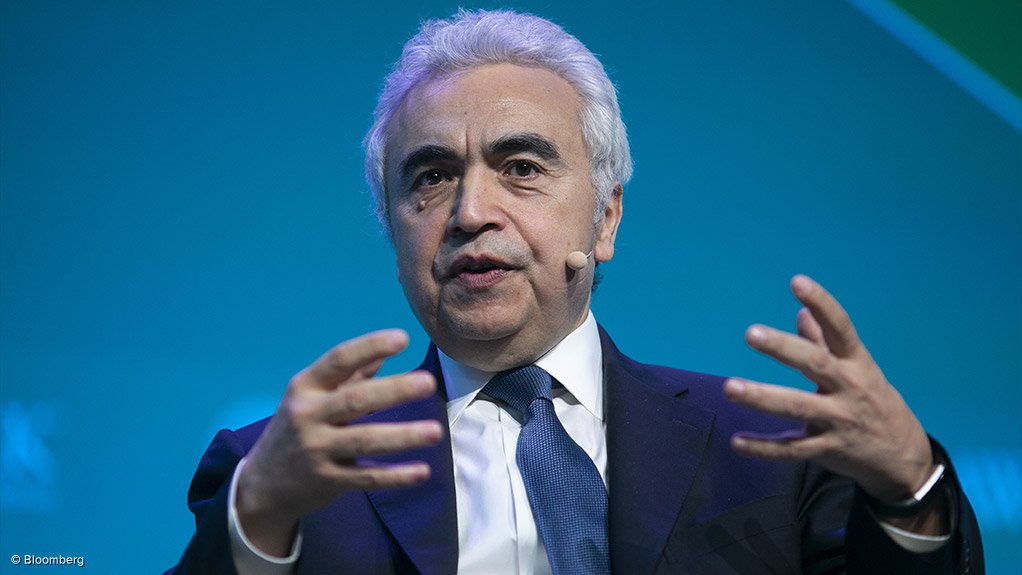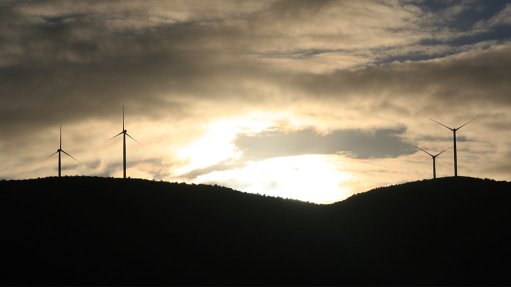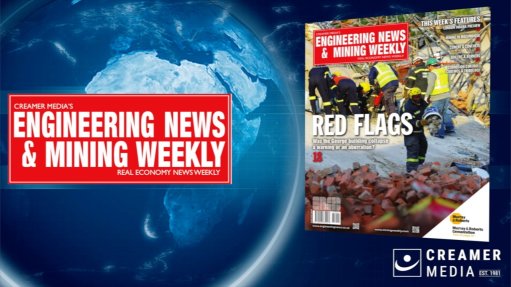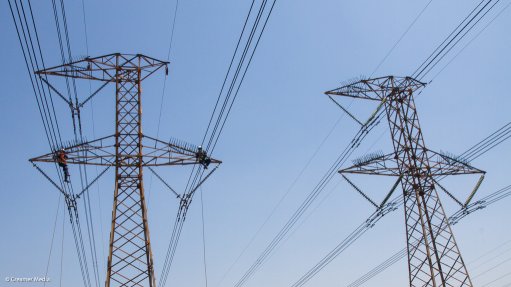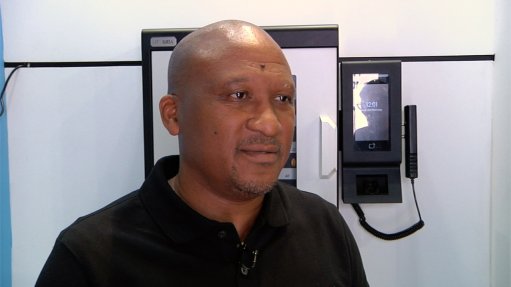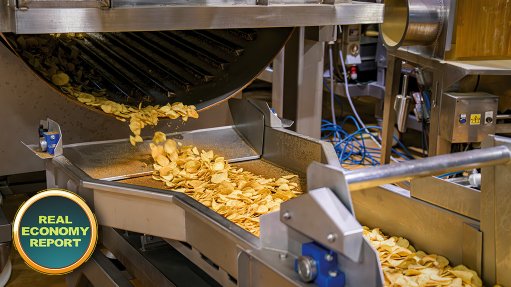Natural gas, electricity price volatility and inflation the result of natural gas crisis
Natural gas and electricity prices have spiked to record highs, most notably in Europe and some major Asian markets, causing potentially significant economic impacts and volatility in gas and electricity markets, driven by turmoil in natural gas markets, says intergovernmental organisation International Energy Agency (IEA) executive director Dr Fatih Birol.
A range of issues is affecting the natural gas sector, including last year’s exceptionally rapid global economic rebound, outages and maintenance of key gas infrastructure and a lack of sufficient supply from Russia, which is driving broader energy market turbulence in Europe.
The interdependence between gas and electricity security is not going to disappear anytime soon, says the IEA, adding that gas is expected to retain a major role as a source of flexibility and back-up for many years to come, especially in economies such as Europe, that have large seasonal variations in demand.
“In Europe, governments should make natural gas storage part of their security of supply risk assessments, at both a national and regional level, including risks linked to the control of storage by entities from non-European union countries.
“Regulations should be improved to ensure that storage levels are adequate to cover end-user needs, with mandatory minimum storage obligations assigned to all commercial operators with gas retail portfolios. In addition, provisions on transparency and congestion management can help to ensure optimal utilisation of available storage capacity,” Birol advises.
The IEA sees strong elements of artificial tightness in European gas markets, which appears to be owing to the behaviour of Russia’s State-controlled gas supplier. Unlike other pipeline suppliers, such as Algeria, Azerbaijan and Norway, Russia has reduced its exports to Europe by 25% in the fourth quarter of 2021 compared with the same period in 2020, and by 22% compared with its 2019 levels, despite the exceptionally high market prices for natural gas seen in recent months.
“Against today’s low baseline, we estimate that Russia could increase deliveries to Europe by at least one-third, or more than three-billion cubic metres a month, which equates to almost 10% of the European Union’s average monthly gas consumption. Together with the current high level of liquefied natural gas (LNG) inflow, this would provide significant relief to European gas markets,” Birol says.
“The multiple negative effects on power companies, businesses, industrial sectors and consumers are likely to have a lasting impact beyond the market tensions we are seeing this winter in the onrthern hemisphere. The increases in energy prices have also contributed to broader price inflation that is affecting many economies worldwide,” he adds.
The natural gas market turmoil has spilled over into European electricity markets, which typically rely on gas as a marginal fuel and are, therefore, affected when it experiences high prices and volatility. This has been exacerbated by lower than average hydropower output and lower nuclear output highlighting the need for adequate investment in sources of baseload supply and flexibility, says Birol.
“Higher carbon prices have also played a role in pushing up electricity prices, but this needs to be kept in context. We estimate that the effect on European electricity prices of the sharp spike in natural gas prices is nearly eight-times bigger than the effect of the increase in carbon prices.”
Further, although wind power was unusually below average during the European summer, wind and solar photovoltaic provided valuable contributions to meeting European electricity demand in the fourth quarter of 2021. Wind power generation increased by 3% and solar by 20% compared with the same period in 2020.
Additionally, while LNG shipments are providing some additional supply to European gas markets, their timeliness is limited by longer transportation times than for pipelines.
Underground storage remains the principal source of short-term flexibility for gas markets in Europe. However, lower than average inventory levels, at around 50% full as of early January, compared with an average of nearly 70% over the past decade, create further security of supply concerns, especially in the event of late winter cold spells.
“This is why uncertainty over prices and supply remains high in early January, with most of the heating season still to come.”
On a global level, scaling up domestically sourced low-carbon energy supplies provides an opportunity to bring down emissions while at the same time tackling energy security issues related to fossil fuel imports and market volatility.
LONG-TERM LESSONS
“However, potential energy security vulnerabilities do not disappear in a renewables-rich and more electrified energy system. Policy makers need to pay close attention to new clean energy supply chains, in particular the geographical concentration of many critical minerals, such as lithium, cobalt and rare earth elements, that are crucial components of many clean energy technologies,” emphasises Birol.
“Today’s situation underlines the fact that energy systems face significant risks if they rely too much on one supplier for a key element. Today, it is natural gas; tomorrow, it could be something else, such as lithium. This is why I’m urging governments to act now to tackle today’s energy security challenges and those of the future.
“As we showed in [the IEA] World Energy Outlook 2021, well-managed clean energy transitions can help reduce energy market volatility and its impacts on businesses and consumers,” he adds.
Understanding the causes of today’s natural gas market crisis and drawing the right lessons is essential for the transition to more sustainable, secure and affordable energy supplies in the future.
“The road to net-zero emissions will not be smooth. There is a looming risk of further market turbulence if we fail to address the current fundamental imbalance in energy investment. The world has not been investing enough to meet its future energy needs, and this remains the case today.”
Clean energy investment is gradually picking up, but remains far short of what is required to meet rising demand for energy services in a sustainable way. Clean energy investment would need to triple by 2030 to get the world on track for a pathway consistent with limiting global warming to 1.5 °C, he highlights.
“Much stronger investment in low-carbon energy technologies including renewables, energy efficiency and nuclear power is the way out of this impasse. But this needs to happen quickly or global energy markets will face a turbulent and volatile period ahead,” he says.
Additionally, energy efficiency is a particularly powerful tool for governments, businesses and consumers to reduce their exposure to fuel market volatility and enhance resilience.
Gas will remain essential for electricity generation for years to come. The IEA recommends that European governments strengthen policies and regulations on natural gas storage, and seek to diversify their sources of supply. This also applies more broadly for other governments and energy-related supplies, including key elements such as lithium and other critical minerals that are essential to produce batteries and other clean energy technologies, says Birol.
Comments
Announcements
What's On
Subscribe to improve your user experience...
Option 1 (equivalent of R125 a month):
Receive a weekly copy of Creamer Media's Engineering News & Mining Weekly magazine
(print copy for those in South Africa and e-magazine for those outside of South Africa)
Receive daily email newsletters
Access to full search results
Access archive of magazine back copies
Access to Projects in Progress
Access to ONE Research Report of your choice in PDF format
Option 2 (equivalent of R375 a month):
All benefits from Option 1
PLUS
Access to Creamer Media's Research Channel Africa for ALL Research Reports, in PDF format, on various industrial and mining sectors
including Electricity; Water; Energy Transition; Hydrogen; Roads, Rail and Ports; Coal; Gold; Platinum; Battery Metals; etc.
Already a subscriber?
Forgotten your password?
Receive weekly copy of Creamer Media's Engineering News & Mining Weekly magazine (print copy for those in South Africa and e-magazine for those outside of South Africa)
➕
Recieve daily email newsletters
➕
Access to full search results
➕
Access archive of magazine back copies
➕
Access to Projects in Progress
➕
Access to ONE Research Report of your choice in PDF format
RESEARCH CHANNEL AFRICA
R4500 (equivalent of R375 a month)
SUBSCRIBEAll benefits from Option 1
➕
Access to Creamer Media's Research Channel Africa for ALL Research Reports on various industrial and mining sectors, in PDF format, including on:
Electricity
➕
Water
➕
Energy Transition
➕
Hydrogen
➕
Roads, Rail and Ports
➕
Coal
➕
Gold
➕
Platinum
➕
Battery Metals
➕
etc.
Receive all benefits from Option 1 or Option 2 delivered to numerous people at your company
➕
Multiple User names and Passwords for simultaneous log-ins
➕
Intranet integration access to all in your organisation



